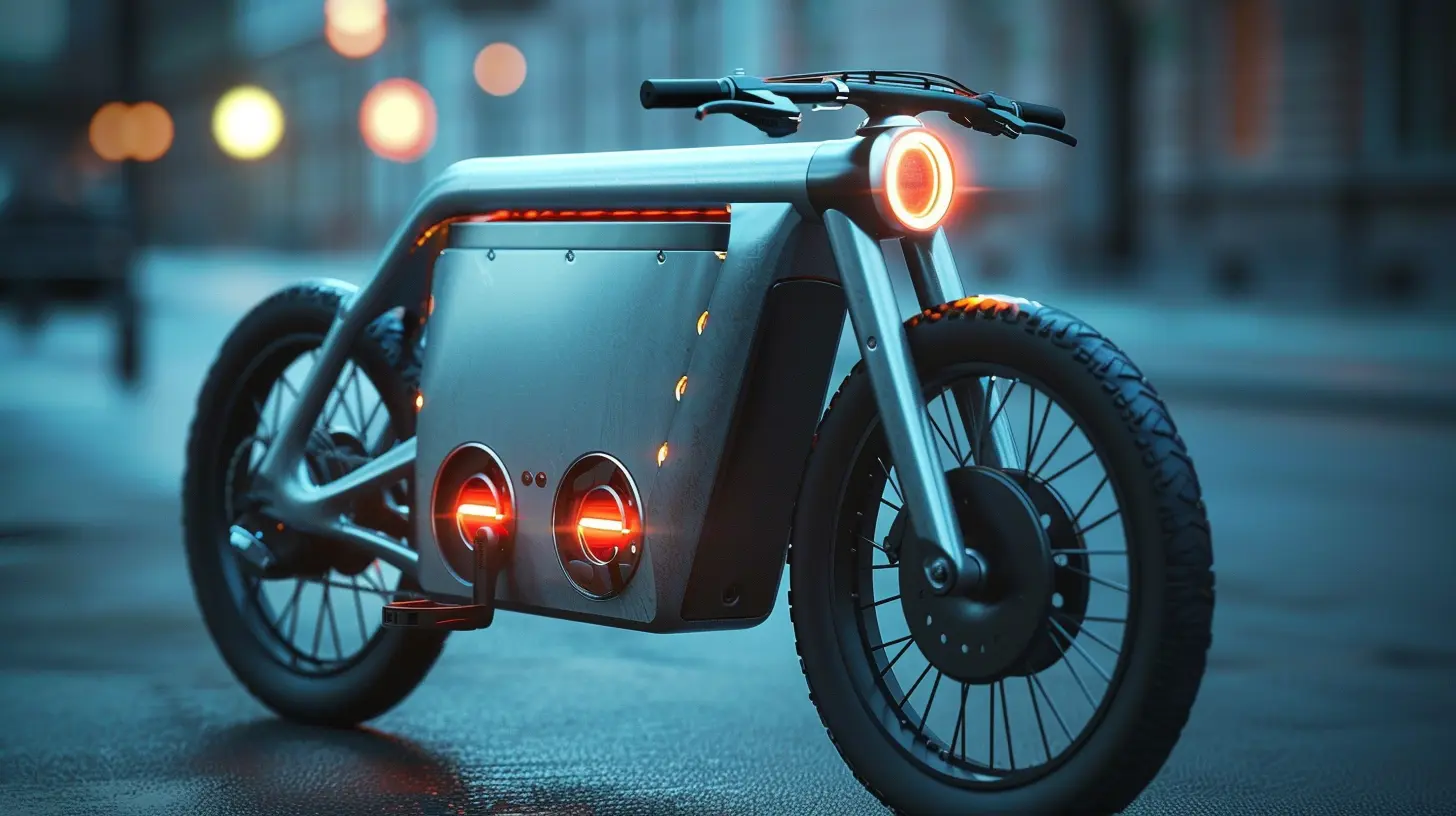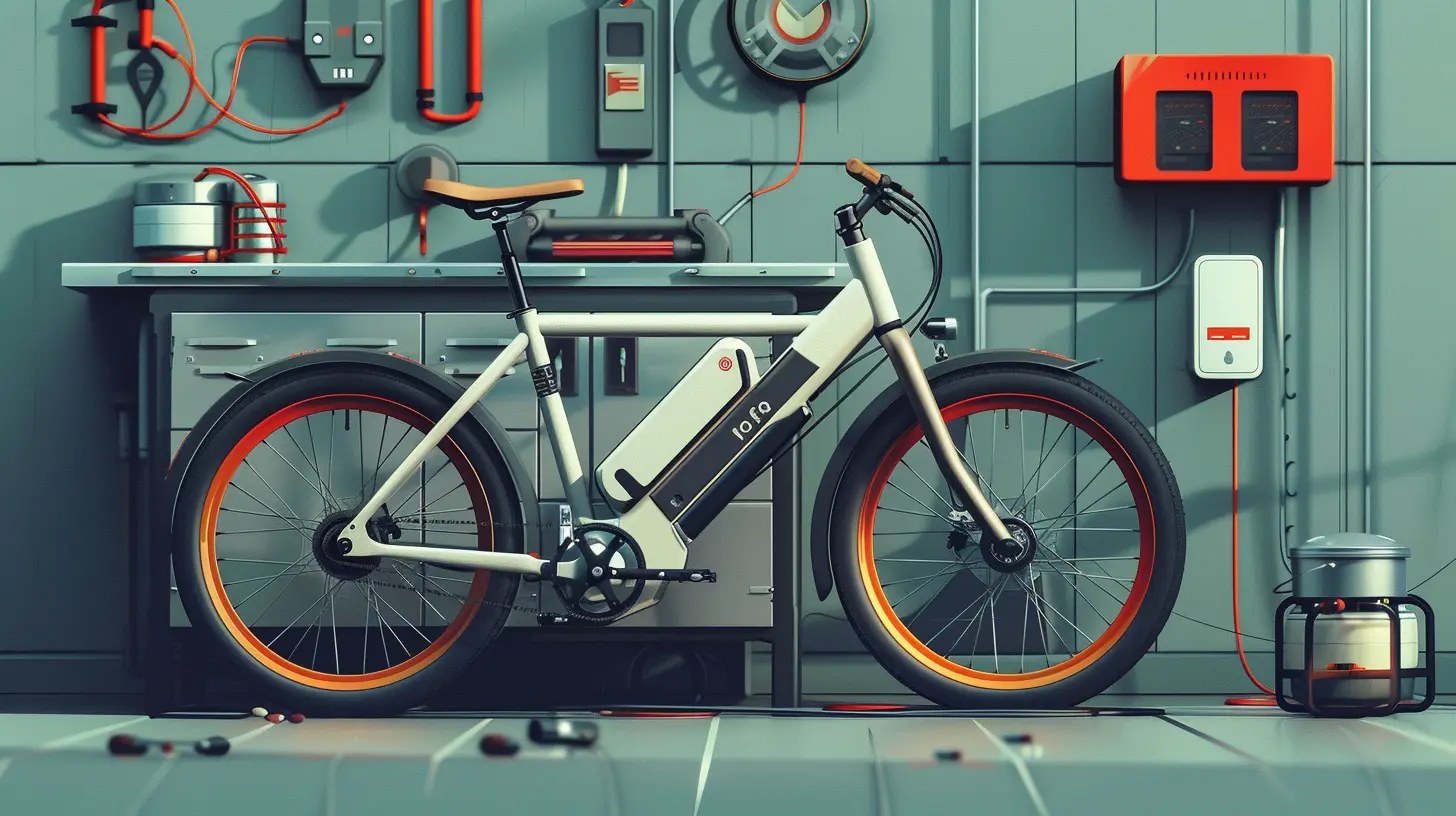A Beginner's Guide to Understanding Electric Bike Batteries
19 August 2025
So, you've finally decided to step into the magnificent world of electric bikes—congratulations! You're about to become one of those super-cool eco-warriors who breeze past gridlocked traffic with a smug grin and zero emissions. But hold your horses. Before you start zipping through town like a caffeinated gazelle, there's one teeny-tiny, not-at-all-complicated thing you should probably understand: the electric bike battery.
Yes, the heart of your e-bike. The magic box that turns your pedaling into power-assisted glory. But what is it really, and why does everyone make it sound like rocket science? Buckle up, because we're going to break it down in a fun, snarky, and totally beginner-friendly way.
🧠 First Things First: What Exactly Is an Electric Bike Battery?
Okay, let’s not overthink it. An electric bike battery is basically the fuel tank of your e-bike—except instead of gas, it’s filled with delicious electricity. It stores energy and feeds it to your motor, giving you that sweet extra boost when you're pretending to casually go up hills.Think of It Like a Big Juice Box
It's like the juice box of energy for your e-bike. You slurp it dry on your ride, then plug it back in like your phone (except please don't try charging your e-bike in the same socket as your toaster while making waffles—safety first, okay?).
⚡ Types of E-Bike Batteries: A Tour of the Usual Suspects
Not all heroes wear capes—and not all batteries are created equal. Let’s peep at what the market has to offer.1. Lithium-Ion (Li-Ion) – The Beyoncé of Batteries
This one’s the queen bee. Lithium-ion is the most common type found in modern e-bikes because it’s light, mighty, and retains energy like a squirrel hoards acorns.- Pros: Long lifespan, lightweight, fast charging
- Cons: More expensive (but worth it—because Beyoncé)
2. Lithium Polymer (Li-Po) – The Smooth Talker
Li-Po batteries are like the flirty cousin of Li-Ion. Sleek and flexible, they can be shaped into various forms to fit the design of your e-bike better. But don’t let their looks fool you.- Pros: Flexibility in design, decent lifespan
- Cons: Dramatic and prone to overheating (like me at a family BBQ)
3. Nickel Metal Hydride (NiMH) – The Awkward Middle Child
Old-school and slowly fading out. NiMH batteries are more eco-friendly than nickel-cadmium, but they’re heavier and less efficient than lithium-based batteries.- Pros: Environmentally better than older tech
- Cons: Poor energy-to-weight ratio, slower charging
4. Lead Acid – The Fossil of the Family
Cheap and… yeah, mostly just cheap. Don’t fall for the low price tag. These batteries are heavier than your uncle's old RV and don’t last long.- Pros: Budget-friendly
- Cons: Heavy, low capacity, short lifespan, why are we even talking about it?
🔋 Decoding Battery Capacity: What Do All Those Numbers Mean?
Ever looked at battery specs and thought, “Is this algebra?” Yeah, you’re not alone.Let’s demystify the lingo:
1. Voltage (V)
Think of voltage as pressure. It determines how much "oomph" your motor can get. Higher voltage = higher potential speed and acceleration. If you're into thrill rides, you might want a bike with higher voltage. If you're more of a scenic Sunday cruiser, you’re good with something lower.Common voltages:
- 36V (standard)
- 48V (a bit more kick)
- 52V (full-on rocket mode)
2. Amp-Hours (Ah)
Now, this is your gas tank size. Amp-hours tell you how much juice your battery can store. More Ah = more range = longer rides without charging = more brunch dates with zero excuses.3. Watt-Hours (Wh)
This is the golden number. It's the product of voltage and amp-hours. Think of it as overall energy—basically your battery’s total stamina.- Watt-Hours = Voltage × Amp-Hours
- More Wh = more miles
Still confused? It’s okay. Just remember: more Wh = more fun.
🛣️ How Far Can You Actually Ride?
Ah yes, the age-old question: "But how far can I ride on one charge?" And the honest answer is… well, it depends. (Helpful, right?)Factors That Affect Range:
- Your weight (no shade, just science)- Terrain (flat = yay, hilly = nay)
- Pedal assist level (are you helping or being dragged?)
- Temperature (batteries hate the cold, just like you)
- Wind (yes, nature is extra)
On average, a mid-range battery (say, 500Wh) can get you 20–50 miles. Treat it right, and maybe it’ll love you back with a few extra miles.
🔌 Charging: Not As Complicated As Dating
Charging an e-bike battery is the easiest relationship you’ll ever have. You literally plug it in. That’s it. No swiping right, no ghosting.How Long Does It Take?
Usually 3 to 6 hours, depending on the battery size and charger type. Want it faster? Some e-bikes come with fast chargers—but be careful, because rushing the charge all the time can degrade battery life. It's like chugging coffee every morning—short-term gain, long-term pain.🤔 Can I Replace My Battery?
Absolutely. Batteries don't last forever (unlike bad tattoos). A good battery will give you about 500–1000 full charge cycles before it starts acting up like a teenager during finals week.When to Replace It:
- Takes longer to charge- Loses range quicker than your phone on Instagram
- Starts swelling, leaking, or just flat out dies (yikes)
Replacement costs? You're looking at anywhere from $300 to $1000. Yeah, it's not pocket change, but hey—neither is Uber every day.
🧼 How to Baby Your Battery (Without Spoiling It)
Want the battery to last? Then treat it better than your dying houseplants. Here are some battery-loving tips:1. Avoid Extreme Temps
If you wouldn’t leave your dog in a hot car, don’t leave your battery. Ideal temps are between 50°F and 77°F (or 10°C to 25°C for the metric crowd).2. Don’t Charge to 100% Every Time
Especially if you’re not using it right away. Charging to around 80–90% prolongs battery life. Think of it like drinking just enough coffee to stay awake without jittering through your keyboard.3. Store Half-Charged
If you're not riding for a while (hello winter hibernation), store the battery at about 50–70% charge. Full or empty storage? That's asking for trouble.4. Use the Right Charger
Yes, the one that came with your bike. No, your laptop charger won’t cut it. And for the love of technology—don’t DIY chargers unless your name is Elon Musk.🧠 Battery Myths You Can Now Laugh At
Let’s bust some myths like it’s our side hustle.Myth 1: You Need to Fully Drain the Battery Before Charging
Wrong decade, buddy. That’s old advice from nickel-cadmium battery days. Today’s lithium batteries actually prefer regular top-ups.Myth 2: More Voltage = More Speed Always
Not quite. The motor has to be rated to handle that voltage. Otherwise, you’ll burn it out—like trying to run espresso through a teabag.Myth 3: Cold Kills Batteries Instantly
Cold affects performance, sure, but it’s not a death sentence. Just don’t freeze the poor thing and expect miracles.🧠 Final Thoughts: Batteries Aren’t That Scary, Are They?
So, there you have it. A complete beginner’s guide to electric bike batteries—minus the engineering degree and caffeine overdose. You now know your volts from your amps, your Li-Ions from your lead acids, and your realistic range expectations.Batteries might seem intimidating at first (much like parallel parking), but once you get the basics down, you're golden. Just remember: treat your battery well, and it’ll return the favor in miles, smiles, and fewer uphill tears.
Now go forth, battery boss, and ride like the wind! (Preferably with a fully charged battery and maybe a helmet.
all images in this post were generated using AI tools
Category:
Electric BicyclesAuthor:

Vincent Hubbard
Discussion
rate this article
1 comments
Fable McCullough
Great article! I'm curious about the differences in battery life between various electric bike models. How do factors like brand, usage, and charging habits affect overall performance? Looking forward to diving deeper into the world of e-bike batteries!
September 3, 2025 at 12:59 PM

Vincent Hubbard
Thanks for your interest! Battery life can vary greatly between e-bike models due to factors like battery capacity, brand quality, riding habits, and charging frequency. Each of these aspects plays a crucial role in overall performance. Happy exploring!


